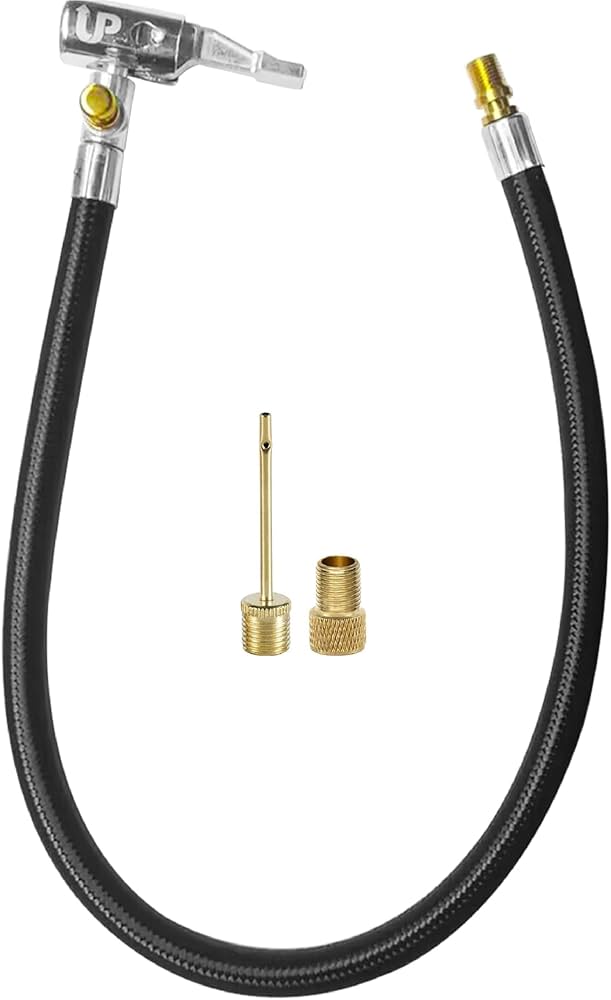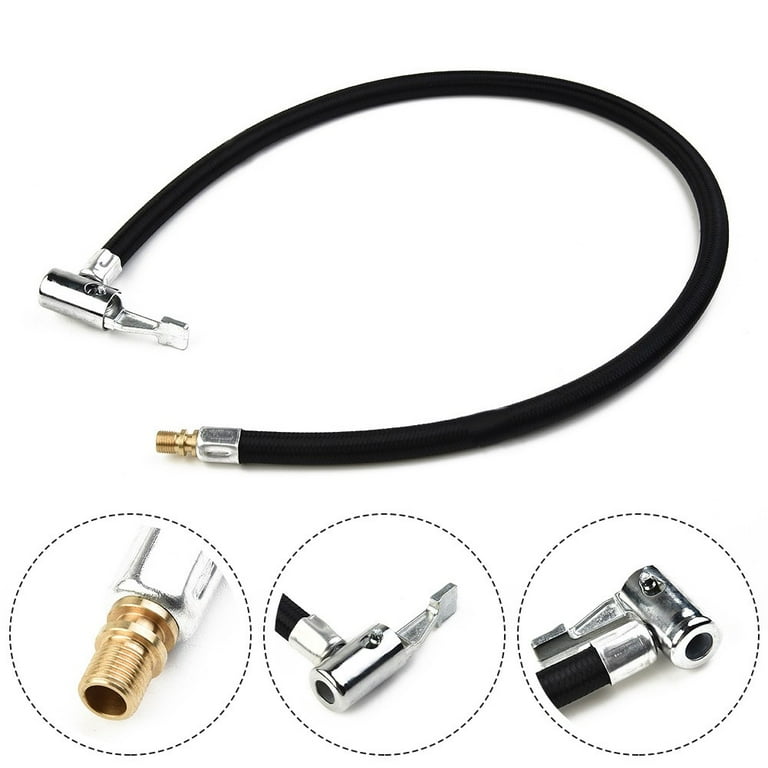If you rely on an air compressor for your projects, you know how important every part is—especially the hose. A worn-out or damaged air compressor hose can slow you down, cause leaks, or even stop your work entirely.
You deserve a replacement hose that’s reliable, durable, and easy to install. You’ll discover exactly what to look for when choosing the perfect replacement air compressor hose. Keep reading to save time, avoid frustration, and get your compressor running smoothly again.
Types Of Air Compressor Hoses
Replacement air compressor hoses come in several types. Each type suits different tasks and environments. Choosing the right hose ensures safety and efficiency. Below are common types of air compressor hoses.
Rubber Hoses
Rubber hoses are flexible and durable. They handle high pressure well. These hoses resist heat and abrasion. Rubber hoses are good for heavy-duty jobs.
Pvc Hoses
PVC hoses are lightweight and affordable. They are less flexible than rubber but easier to carry. PVC hoses suit light to medium tasks. They do not handle heat as well as rubber.
Hybrid Hoses
Hybrid hoses combine features of rubber and PVC. They offer good flexibility and strength. These hoses resist kinks and wear. Hybrid hoses work well in varied conditions.
Steel Wire Reinforced Hoses
Steel wire reinforced hoses have extra strength. They contain a steel wire spiral inside. These hoses handle very high pressure. Steel wire hoses are tough and long-lasting.

Credit: www.ebay.com
Key Features To Consider
Choosing the right replacement air compressor hose is important for safe and efficient work. Several features affect how well the hose performs. Knowing what to check helps you pick the best hose for your needs. Focus on these key features to ensure durability, safety, and ease of use.
Material Durability
The hose material must resist wear and tear. Look for rubber or reinforced PVC hoses. These materials handle rough use and resist cracking. A durable hose lasts longer and saves money. Check if the hose can handle exposure to oils and chemicals.
Pressure Ratings
Every hose has a pressure rating. This shows the maximum air pressure it can handle safely. Always choose a hose with a higher pressure rating than your compressor’s output. A hose that can’t handle pressure may burst and cause accidents.
Length And Diameter
The hose length affects how far you can work from the compressor. Pick a length that suits your workspace without excess slack. Diameter matters too. A wider hose allows more air flow, improving tool performance. Match the diameter with your compressor and tools.
Flexibility And Weight
A flexible hose is easier to move and store. Lightweight hoses reduce fatigue during long use. Avoid hoses that are stiff or heavy. They limit your movement and make work harder. Find a balance between flexibility and strength for best results.
Choosing The Right Hose For Your Needs
Choosing the right replacement air compressor hose is important for safety and performance. The hose must fit well with your compressor and meet the demands of your tasks. Picking the correct hose helps avoid leaks, bursts, and downtime. This guide helps you select the best hose based on type, use, and environment.
Matching Hose To Compressor Type
Different compressors need different hoses. Check your compressor’s pressure rating. The hose must handle the maximum pressure without breaking. Also, consider the hose diameter. It affects air flow and tool performance. Use the hose type suggested by the compressor maker. This ensures compatibility and safety.
Application-specific Requirements
Think about how you will use the hose. For light tasks, a flexible and lightweight hose works well. For heavy-duty jobs, choose hoses made from strong materials. Some tasks need hoses that resist oil, chemicals, or heat. Check if the hose can handle your work’s temperature and substances.
Environmental Factors
Where you use the hose matters. Outdoor work needs hoses that resist sunlight and weather. Cold climates need hoses that stay flexible in low temperatures. Hot environments require hoses that can handle heat without damage. Also, consider rough surfaces that might wear the hose quickly.
Installation Tips For Optimal Performance
Installing a replacement air compressor hose correctly ensures your tool works well. Proper installation helps avoid air leaks and damage. Follow simple steps to get the best performance from your hose. These tips help keep your compressor running smoothly and last longer.
Careful attention during installation can save time and money. A well-installed hose improves safety and efficiency. Learn how to connect the hose properly, prevent kinks, and maintain its condition.
Proper Connection Techniques
Start by checking the hose ends and compressor fittings. Make sure they match and are clean. Attach the hose firmly to the compressor outlet. Tighten connections by hand first, then use a wrench if needed. Avoid over-tightening to prevent damage. Use thread seal tape if the connection leaks air. Check for a secure fit before turning on the compressor.
Avoiding Kinks And Twists
Lay the hose out straight before use. Avoid sharp bends or tight loops. Kinks block air flow and cause damage over time. Coil the hose loosely for storage. Use hose reels or hooks to keep it untangled. Keep the hose away from sharp edges and heavy objects. Smooth curves extend hose life and keep air pressure steady.
Maintaining Hose Integrity
Inspect the hose regularly for cracks or leaks. Clean the hose after use to remove dirt and oil. Store it in a cool, dry place away from sunlight. Avoid exposure to harsh chemicals or extreme temperatures. Replace the hose if you see signs of wear. Proper care protects your investment and keeps the compressor running well.
Maintenance Practices To Extend Hose Life
Proper care helps your replacement air compressor hose last longer. Small actions can stop damage and keep the hose working well. Follow simple steps to maintain your hose. Save money by avoiding early replacement.
Regular Inspection
Check the hose for cracks or leaks often. Look closely at connection points and bends. Catching problems early stops bigger damage. Replace damaged parts right away to keep safety.
Cleaning Methods
Wipe the hose with a damp cloth to remove dirt. Avoid harsh chemicals that can weaken the material. Clean the hose after each use to prevent buildup. Dry it well to stop mold and rust.
Storage Recommendations
Keep the hose in a cool, dry place away from sunlight. Coil it loosely to avoid kinks and bends. Use a hose reel or hanger for organized storage. Avoid heavy objects on the hose to prevent damage.

Credit: www.amazon.com
Common Issues And Troubleshooting
Replacement air compressor hoses face common problems during use. Knowing these issues helps fix them quickly. Troubleshooting keeps your equipment safe and working well. This section covers main problems and how to solve them.
Leaks And Burst Prevention
Leaks in air compressor hoses waste air and reduce power. Check hoses regularly for small cracks or holes. Tighten all fittings and connections to stop leaks. Replace hoses that show signs of damage or weakness. Avoid sharp bends or kinks that cause bursts. Store hoses in cool, dry places away from sunlight.
Pressure Loss Solutions
Pressure loss lowers the compressor’s efficiency and slows work. Inspect hoses for blockages or internal damage. Clean or replace hoses if airflow feels weak. Use the right hose size for your compressor’s pressure. Keep hoses straight and free from twists. Check valves and fittings for proper sealing.
Wear And Tear Signs
Regular use causes wear on air compressor hoses. Look for cracks, fraying, or stiffness on the hose surface. Damage near the fittings often signals hose failure. Replace hoses showing bulges or soft spots. Frequent hose replacement saves money and prevents accidents. Monitor hose condition often, especially in harsh work conditions.
Top Brands And Quality Standards
Choosing the right replacement air compressor hose means picking quality and reliability. Top brands follow strict standards to ensure safety and performance. These hoses last longer and work better under pressure.
Quality standards protect you from leaks and failures. Trusted brands meet these standards consistently. They also make sure the hose fits perfectly with your compressor system.
Industry Certifications
Look for hoses with industry certifications. These marks show the hose passed tests for strength and durability. Common certifications include ISO, ANSI, and SAE. Certified hoses resist heat, pressure, and wear. They meet safety rules set by experts.
Trusted Manufacturers
Choose hoses from well-known manufacturers. These companies have years of experience and good reputations. They use quality materials and strict controls during production. Trusted brands often offer a wide range of hose types and sizes. Their products are tested for real-world use.
Warranty And Support
Top brands provide clear warranties on their hoses. Warranties protect you against defects and early damage. Good customer support helps solve problems fast. They offer advice on installation and maintenance. This support extends the life of your hose.

Credit: www.walmart.com
Frequently Asked Questions
What Size Replacement Air Compressor Hose Do I Need?
Choose a hose size matching your compressor’s outlet diameter. Common sizes include 1/4 inch and 3/8 inch. Check your tool’s requirements for optimal performance and fit.
How To Install A Replacement Air Compressor Hose?
Turn off the compressor and release air pressure first. Detach the old hose carefully. Attach the new hose securely to avoid leaks. Test for proper airflow after installation.
What Materials Are Best For Air Compressor Hoses?
Rubber and polyurethane are common materials. Rubber offers durability and flexibility. Polyurethane is lightweight and resistant to kinks. Choose based on your usage needs and environment.
How Long Do Replacement Air Compressor Hoses Last?
Hoses typically last 3 to 5 years with proper care. Avoid sharp bends and extreme temperatures. Regular inspection helps detect wear early to ensure safety.
Conclusion
Choosing the right replacement air compressor hose keeps your tools working well. A good hose lasts longer and handles pressure safely. Check the size and material to match your needs. Keep your workspace safe by using a strong, flexible hose.
Regularly inspect the hose for cracks or leaks. Replace it quickly if you find damage. This simple step saves time and money. Trust a quality hose for better performance every day. Don’t ignore your air compressor hose’s condition—it matters a lot.

